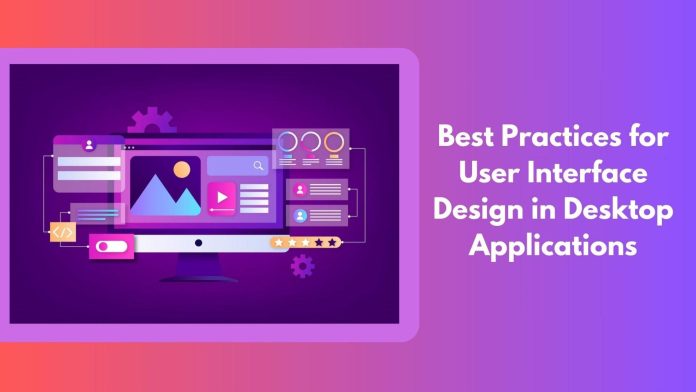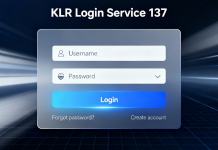Creating an engaging and efficient user interface (UI) for desktop applications is more crucial than ever. With countless applications vying for user attention, a well-designed UI can be the difference between an app that thrives and one that fades into obscurity.
Let’s explore the best practices for UI design in desktop applications that can help ensure your app not only stands out but also provides an exceptional user experience.
Understanding User Needs
Conducting User Research
Before you even think about design, it’s essential to understand who your users are. Conduct user research through surveys, interviews, and observation. This helps gather valuable insights into what your users need and expect from your application.
Creating User Personas
User personas are fictional characters created based on your user research. They represent different segments of your target audience and help guide design decisions by keeping the end-user in mind throughout the development process.
Gathering User Feedback
Regularly gather feedback from your users through beta testing, user forums, and support channels. This feedback is crucial for continuous improvement and ensuring your application remains user-centric.
Principles of Good UI Design
Consistency
Consistency in design means maintaining uniformity across all elements of the application. This includes using the same colors, fonts, and button styles throughout the interface to create a cohesive and intuitive user experience.
Simplicity
Simplicity is about stripping away unnecessary elements and focusing on what truly matters. A simple, uncluttered interface is easier for users to navigate and understand, reducing the learning curve.
Feedback
Feedback is vital in guiding users and confirming their actions. This can be in the form of visual cues (like button highlights), auditory signals, or haptic feedback, ensuring users know their actions have been acknowledged by the system.
Planning the User Interface
Defining Use Cases
Start by defining the primary use cases for your application. This involves understanding the main tasks users will perform and ensuring the UI is tailored to facilitate these tasks efficiently.
Designing User Flows
User flows are diagrams that map out the steps users take to complete a task within your application. Designing these flows helps in identifying potential pain points and streamlining the user journey.
Wireframing and Prototyping
Wireframes are basic visual representations of your application’s layout. Prototyping takes this a step further by creating interactive mockups that allow for early testing and feedback before full-scale development begins.
Visual Design Elements
Color Theory
Colors evoke emotions and convey information. Choose a color palette that aligns with your brand and enhances usability. Ensure good contrast between text and background to maintain readability.
Typography
Typography involves selecting appropriate fonts and text sizes. Ensure that your fonts are legible and complement the overall design. Use different font weights and sizes to create a visual hierarchy that guides the user’s eye.
Icons and Graphics
Icons and graphics should be intuitive and aid navigation. Use universally recognized symbols to avoid confusion and ensure that all visual elements contribute to a cohesive aesthetic.
Navigation Design
Clear Navigation Structure
A clear and logical navigation structure is crucial. Users should be able to find what they’re looking for with minimal effort. Use menus, tabs, and sidebars effectively to organize content.
Breadcrumbs and Menus
Breadcrumbs help users understand their current location within the application and easily navigate back to previous sections. Menus should be straightforward and not overloaded with options.
Search Functionality
Incorporate a search bar to help users quickly find specific content or features. An effective search function can significantly enhance the user experience, especially in complex applications.
Layout and Spacing
Grid Systems
Grid systems provide a framework for organizing content on the screen. They help maintain alignment and consistency, ensuring a balanced and visually appealing layout.
White Space Utilization
White space, or negative space, refers to the empty areas between design elements. Proper use of white space improves readability and focuses attention on key components.
Responsive Design
Although desktop applications primarily target larger screens, ensuring responsiveness across different screen sizes can enhance usability and accessibility. Elements should adapt gracefully to varying dimensions.
Interaction Design
Interactive Elements
Interactive elements like buttons, sliders, and form fields should be designed for ease of use. They should respond promptly to user actions, providing immediate feedback.
Animation and Transitions
Subtle animations and transitions can make interactions feel smoother and more engaging. However, avoid excessive animations that can distract or annoy users.
Accessibility Considerations
Designing with accessibility in mind ensures that your application is usable by everyone, including people with disabilities. This includes providing keyboard navigation, screen reader support, and considering color blindness.
Usability Testing
Conducting Usability Tests
Usability testing involves observing users as they interact with your application. This can uncover issues that weren’t apparent during the design phase.
Analyzing Test Results
Analyze the results of usability tests to identify common pain points and areas for improvement. Prioritize changes that will have the most significant impact on user experience.
Iterating Based on Feedback
Usability testing is an iterative process. Use feedback to make improvements, and then test again to ensure those changes have the desired effect.
Performance Optimization
Ensuring Fast Load Times
Slow load times can frustrate users and lead to abandonment. Optimize your application’s performance by minimizing resource-intensive processes and optimizing code.
Optimizing Resource Usage
Efficiently manage the application’s use of memory and processing power to ensure smooth performance, even on less powerful machines.
Minimizing Bugs and Glitches
Regularly update and test your application to minimize bugs and glitches. A stable, reliable application builds user trust and satisfaction.
Accessibility
Designing for All Users
Accessibility isn’t just a legal requirement; it’s a moral one. Design your application so that it can be used by people with various disabilities, ensuring inclusivity.
Implementing ARIA (Accessible Rich Internet Applications)
ARIA provides additional information to assistive technologies about elements on the page. Implementing ARIA can significantly improve the accessibility of your application.
Testing for Accessibility
Regularly test your application with screen readers and other assistive technologies to ensure that it meets accessibility standards and provides a good user experience for all users.
Consistency Across Platforms
Maintaining Uniformity
If your application has versions for different platforms (Windows, macOS, Linux), ensure that the UI remains consistent across all. This helps users transition seamlessly between devices.
Cross-Platform Compatibility
Design with cross-platform compatibility in mind. This ensures that your application functions correctly and looks good, regardless of the operating system.
Syncing Data and Preferences
Allow users to sync their data and preferences across devices. This enhances the user experience by providing continuity and convenience.
Error Handling
Clear Error Messages
When errors occur, provide clear and concise error messages that help users understand what went wrong and how to fix it.
Providing Solutions
Offer solutions or alternatives to help users overcome errors. This can reduce frustration and improve the overall user experience.
Preventing Errors
Design your application to prevent errors wherever possible. For example, use input validation to prevent users from entering incorrect data.
Security Considerations
Protecting User Data
Ensure that user data is protected through encryption and secure storage practices. This is crucial for maintaining user trust.
Implementing Secure Authentication
Use secure authentication methods, such as two-factor authentication, to protect user accounts from unauthorized access.
Regular Security Updates
Regularly update your application to address security vulnerabilities and protect against new threats. Keeping your application secure is an ongoing process.
Conclusion
Designing a user interface for desktop applications involves a delicate balance of aesthetics, usability, and performance. By adhering to best practices and continuously iterating based on user feedback, you can create an application that is both functional and delightful to use. Keep user needs at the forefront, and remember that good design is an ongoing process of refinement and improvement.
Author Bio
Pranjal Mehta
Experienced Managing Director at a software development company with a demonstrated history of working in the information technology and services industry. Skilled in Oracle Database, Customer Relationship Management (CRM), Databases, IT Service Management, and Management. Strong business development professional with a Master of Information Technology focused in Information Technology from Swinburne University of Technology.






